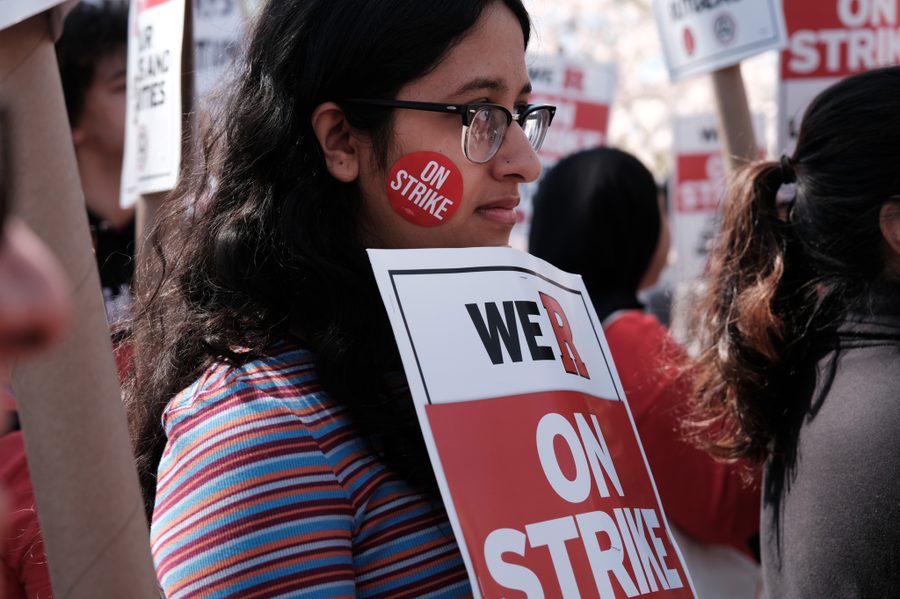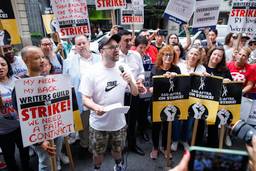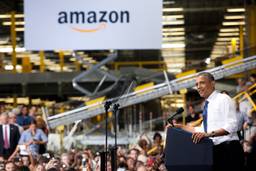This Is How It Spreads
The raw ingredients are finally in place for the labor movement to plant its seeds everywhere.
Hamilton Nolan

In 2015, a group of my colleagues and I decided to try to unionize our company, Gawker Media. This mostly involved an intense, weeks-long process of speaking to everyone we worked with to convince them why this would be a good idea. As we did that, one thing became clear: Even in a newsroom populated overwhelmingly by outspoken left-wingers, most people didn’t know that much about unions. How did they work? What were the rules? We encountered not hostility so much as people chewing over, for the first time, something they had never really considered.
There were two obvious reasons for this. First, there were not many unions in our particular industry at the time, so few people had ever been union members before. And second, only one in ten workers in the whole damn country were union members, meaning that, unlike in past generations, few people had grown up with a parent or friend or relative who was a union member. A consequence of the long term dwindling of union density was that casual contact with unions had also dwindled. Fewer people had a mom who was a shop steward, an uncle who went on strike or a friend who could tell them about a great new contract at their job. Lower union membership meant more widespread ignorance about what unions were all about — which, in turn, meant that every new organizing drive was more of an uphill battle. The decline of unions in the past drove further decline in the present.
But this dynamic also runs in reverse. As more and more companies in our industry unionized, unions rapidly evolved from a novelty to a necessity. The people who won a union at one workplace told their friends at the next workplace. It spread. It became less mysterious. For non-union workers, every new union somewhere else was a reminder that they might be missing out on something. After four or five years, it started to be more noticeable when a newsroom wasn’t unionized. The idea, made real, sold itself.
Here is some good news: This snowball effect that propels the labor movement forward is getting big now. Big enough to pay attention to. Think about the implications of the fact that tens of thousands of people in higher ed—most of them grad and undergrad workers — have unionized in just the past two years. Tens of thousands more of them, already unionized, have gone on strike. A characteristic of this particular group of workers is that the vast majority of them are not going to spend their entire careers on college campuses. They will go through these big union drives, contract fights, and strikes, and then they will go out into the world. All over the place. Credentialed in every field, they will go to white collar offices and blue collar jobs and, no doubt, into service and retail jobs. Each one of them is a seed that can grow another union wherever they end up. Tens of thousands of young people, all former union members, experienced in labor battles, percolating into every crevice of the working world. Tens of thousands of young people who know what unions can do, who know how organizing is done, who are harder to trick with anti-union lies, filtering into countless non-union workplaces. Everywhere.
This is how it spreads. This is what we need. Every union is important for its own members, but what is even more important about the current wave of campus union activity is that it has big numbers of people involved, and those people are about to scatter like dandelion seeds blown in the wind. The most vital legacy of these higher ed unions will not be what they do on campus, but what they lead to everywhere else.
There is another ingredient adding fuel to this fire: attention. The past decade’s widespread unionization of media outlets did not produce a huge number of new union members, but it did produce a drastic increase in reporters who were interested in organized labor, which led to more coverage. That interest found a home, most notably, in the union drives at Starbucks and Amazon, lending both of those campaigns a national importance that exceeds their raw numbers.
I spent the past year reporting and writing a book about the labor movement, and everywhere I went, people told me that they were inspired by Starbucks and Amazon. The increased media focus on labor combined with these name brand campaigns has elevated the idea of unions into the national consciousness. Every big strike that makes the news helps. If screenwriters go on strike on May 1, as looks possible, Hollywood will shut down, and labor power will grab center stage every time anyone turns on their TV. Even normies have heard of this stuff. This may seem like a small thing, but it isn’t. It provides people with a reference point — a mental foundation to build on.
A young person goes to grad school — at the University of California, at Rutgers, or at dozens of other higher institutions in between. There, they participate in a union drive. They win. They rally and fight the school for a contract. They win. The young person leaves school, and gets a job — at an accounting firm, or a tech company, or a restaurant, or a bar. They look around at their new job, and think of how it could be improved with a union. They talk to their coworkers about it. The idea does not sound completely foreign or ridiculous to their coworkers, because they read about the Starbucks and the Amazon campaigns. Why not them? Why not there? Why not now?
This is how it spreads. The big picture of organized labor in America is still dark, because union density continues to decline. But masked in those depressing numbers is this story of potential growth. Today, unlike any time in the recent past, we are at the beginning of a period when there will be a lot of young union members who are at the peak of their energy and radicalism, who are moving through every industry and geographic region, and who will find themselves working with people who are familiar with the existence of unions, and have positive feelings about them. It sounds simple, but it only takes a few simple ingredients for life to flourish in the labor movement.
As the little girl in “Field of Dreams” said: People will come. That much I am sure of. Will the union establishment be ready for them? Can labor’s depressed institutions rally themselves enough to not fuck this up? We shall see.

I hope you found this article important. Before you leave, I want to ask you to consider supporting our work with a donation. In These Times needs readers like you to help sustain our mission. We don’t depend on—or want—corporate advertising or deep-pocketed billionaires to fund our journalism. We’re supported by you, the reader, so we can focus on covering the issues that matter most to the progressive movement without fear or compromise.
Our work isn’t hidden behind a paywall because of people like you who support our journalism. We want to keep it that way. If you value the work we do and the movements we cover, please consider donating to In These Times.
Hamilton Nolan is a labor writer for In These Times. He has spent the past decade writing about labor and politics for Gawker, Splinter, The Guardian, and elsewhere. More of his work is on Substack.







